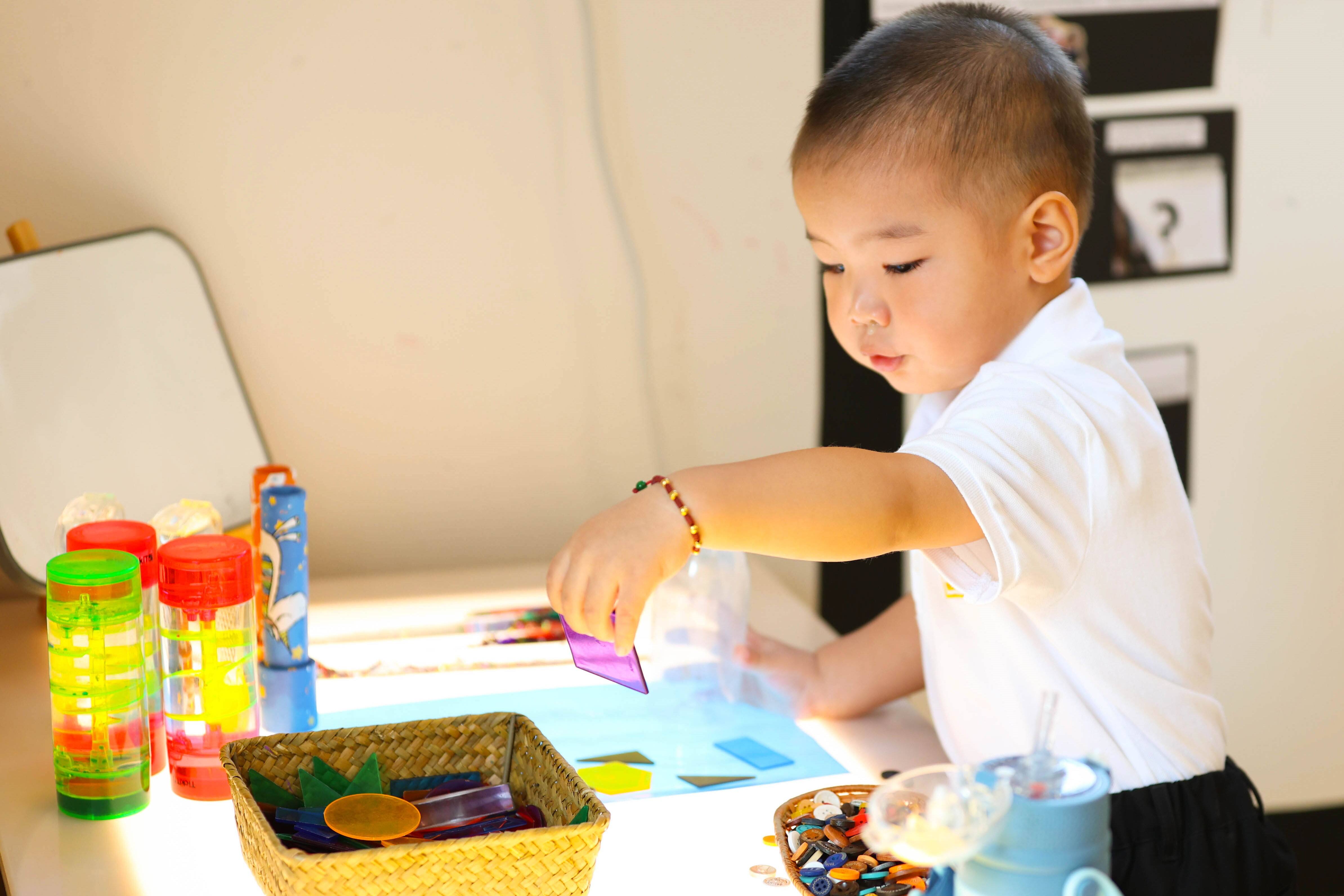
The new academic year has begun full of anticipation for our children. We have already felt their growth during the summer holiday as we interacted with the children on orientation and the first school days. And as we look at each newly formed team, the seeds of friendship, exploration, collaboration and learning are also breaking out. Let us look back at what the children experienced in 'Project-based learning' and 'Drama in Education' and see how they realised the importance of talking to themselves and connecting with the world in their early years. Let us also revisit the growth within Hiba Nursery to start the new year by looking at how they have developed through EYFS curriculum nine learning areas.

EY3 children took their interests from the project learning to lead their study and exploration. They finally decided to use 'Drama in Education' to present their thoughts, which is typical in Hiba Nursery. The teachers play key roles in creating connections for the children, constantly empowering them to explore and learn - as they reach milestones in the areas of personal, social and emotional development, communication and language, understanding of the world, literacy and mathematics.
At the early stage of the project, children showed an immersive passion for the topics of seeds, magic forests, and animal habitats. Up to the end of this project, children decided to present their feedback through the "Drama in Education" format. They were separated into three groups and started creating their own story.

Group One
The Pet Competition
This group explored the concept of comparison and competition. For children, comparison is the first step to recognising patterns in life. However, when we compare ourselves or are compared to others, it can impact our wellbeing.
The children created the narrative that the Animal Researchers' Nursery' was holding a competition for the best arctic animal. Many arctic animals were brought to the competition, a polar bear, a fox, a woodpecker and an arctic rabbit. Each animal told the arctic rabbit what they were the best at. For example, the polar bear was the strongest, the fox the smartest, and the woodpecker could eat worms. But the arctic rabbit feels very different to the others about comparing themselves. Do you think the arctic rabbit should attend this competition? Why? What's the purpose of comparing and competing?

Group Two
The learning experience
This group explored the value of investigation and having the courage to be independent. As our children move on in their educational journeys, they will be presented with many learning opportunities. How can they take ownership of that learning?
The little girl starts her journey at the train station, ready to go on an expedition to the arctic in search of an arctic rabbit, but before she can get on the train, she receives three telephone calls. The first is from her teacher, who tells her excitedly that the school has organised a special event about arctic rabbits, the second is from the Head of the Nursery, and the third is from her father.
Each person tries to convince her to go to school that day instead of making her trip. She debates about what she should do. Which way of seeking knowledge is more valuable? Learning from first-hand experiences or gaining information from others?

Group Three
The rabbit's choice
The third group explored individual choice and themes of animal conservation and habitats. Discussing the difficult decisions that need to be made to protect animals and the environment.
The children took on the role of the expert and discussed the various tools needed for arctic exploration, drawing a large table full of the equipment they needed to study the arctic rabbit. Then one day, a little girl asks the experts to find the arctic rabbit for her, they gladly help, but she then asks if she can take it home. The rabbit refuses, wanting to stay in the arctic, and the experts agree, but the girl is very clever and tries several methods to convince the experts to let her take the rabbit with her, against its wishes.
Whose needs are more important, children or the arctic rabbit?
During our bilingual sessions, we have been using techniques derived from drama to explore social scenarios with complex social implications. Children guide the teachers by acting as various characters through the situation, explaining why each character should take such steps. From our immersive project-based learning experience, children learn more about themselves and feel a connection with a wider world. They are equipped to become individuals with our Hiba values of respect, integrity, kindness, respect and responsibility day after day.
Source: EY3 Class 2021-2022
Teachers: Charlotte Grainger, Monica Xu